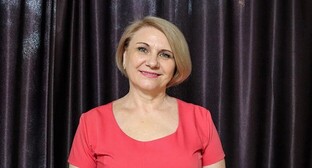06 May 2003, 14:00
Yeysk
City in Krasnodar kray (region), kray subordination, rayon (sector) centre, 247 km north-west of Krasnodar and 172 km south-west of Rostov-on-Don, economic centre Kuban-Priazov Lowland, seaside climatic and mud-bath health resort. Located on the coast of Taganrog Gulf of the Sea of Azov, near the mouth of the Yeya River, at the bottom of the Yeysk Spit, dividing the Gulf and the Yeysk Estuary.
The climate is moderately continental. Winter is mild; no stable snow cover formed; the temperature in January averages to -4?С. Spring is cool. Summer is very warm, the temperature in July averages to 24?С, relative humidity is about 60%. Summer heat is softened by sea winds. Autumn is warm and clear. Windy (predominantly eastern and western winds) sunny weather is characteristic. Bathing season is from May to September (water temperature is 19-25?С). Average annual amount of precipitation is about 450 mm.
Port on the Sea of Azov. Terminal railway station of the branch from the station of Starominskaya in the Rostov-on-Don - Tikhoretskaya line. Motor road junction. Airport. Population (1992 est.) 80.5 thousand, (1868 est.) 2.5 thousand, (1897 est.) 35.4 thousand, (1912 est.) 50 thousand, (1926 est.) 37.7 thousand, (1939 est.) 45 thousand, (1959 est.) 55 thousand, (1970 est.) 64 thousand, (1979 est.) 70 thousand, (1989 est.) 77.8 thousand.
In 1848, a seaport was founded on the coast of the Yeysk Spit, and the settlement round it received the rights of a city, which played a significant role in export of agricultural production (bread, wool, etc.) in the 1850-1860s. Yeysk had up to 65 various handicraft and industrial enterprises. After driving of the Rostov-Vladikavkaz railway (in the 1870s) and construction of Novorossiysk seaport (in the 1880s), the commercial and transport significance of Yeysk went down. From the late 19th to the middle of the 20th century, Yeysk was a fishing centre. Since the 1930s, the city built enterprises of flavouring, light and engineering industry.
By the beginning of the 1990s, Yeysk had a factory of polygraphic machines, a machine tool plant and a repair factory, the Attraktsion factory, etc.; food-processing industry (a meat-processing plant, a dairy factory, a winery, a brewery, a fruit and vegetable cannery); a feed and elevator mill; a clothes factory, a furniture factory, etc.
The city has the Higher Military Air College of Pilots.
Museum of history and local lore. Art museum.
Yeysk is the Motherland of the black-and-white artist D.I. Mitrokhin, poet A.G. Arkhangelsky, film director S.F. Bondarchuk, architect B.I. Tkhor, actress N.V. Mordyukova. It is in Yeysk that the sportsman (Graeco-Roman wrestling) I.M. Poddubny was buried; competitions in Graeco-Roman wrestling dedicated to Poddubny are held every year.
The favourable climate, the even flat sand bottom of Taganrog Gulf and the Yeysk Estuary have made Yeysk a convenient health resort for adults and children since the early 20th century. In 1991, the resort operated the Yeysk trade-union sanatorium (500 beds); the Yeysk children's sanatorium (75 beds) for treatment of children with diseases of the nervous and the locomotor systems; a trade-union rest home; a resort polyclinic, a balneary (46 baths), a therapeutic mud bath, healing beaches. Out-patient treatment and board and treatment authorisation was organised. Tourist centre (518 beds), 3 rest bases (the number of beds totalling to 515).
The healing waters, found in 1912, are low-sulphide sodium chloride and iodide-bromine sodium chloride. They are used in balneotherapy as baths, lavages and inhalations. Fangotherapy involves usage of silt mud from Khanskoye Lake, located 55 km south of Yeysk. Patients with diseases of the locomotor, the nervous and the cardiovascular systems, the skin, gynaecological illnesses are treated here.
Central districts of the city have a gridiron pattern of streets; there are a lot of green plantations, three parks. Rather narrow shady streets are mostly built-up with one-storeyed individual residential houses (as a rule, of brick); the eastern end of Yeysk is built up with microdistricts of multi-storeyed residential houses (built in the 1960-1990s). There are a lot of gardens in the environs of the city. The Yeysk Spit within the city abounds in sand beaches.





Комментирование через Кавказский узел